Preserving wetlands for the birds
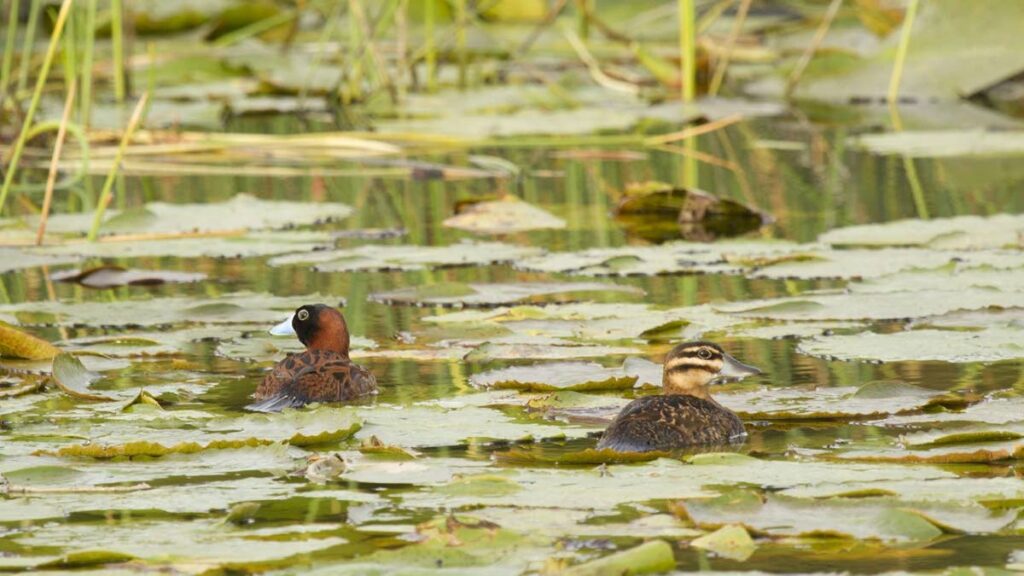
From highlands to coasts, Tobago is a birder’s paradise. Faraaz Abdool shares his affection and appreciation for ducks that inhabit and visit the wetlands, and reminds us that all waterfowl are protected in Trinidad and Tobago.
Mention of Tobago conjures images of beaches and coastlines, rugged or placid. Those who have visited the Main Ridge Forest Reserve dream of verdant, undulating hills and the myriad exquisitely feathered birds within. However, an undervalued part of the island’s landscape takes the form of fresh water and the surrounding terrain. Often abused and engineered into shape, bodies of fresh water have been drained, re-routed, dammed, and otherwise exploited for much of recorded history. Ever resilient, water finds a way, and life makes every attempt to adapt to changed layouts.
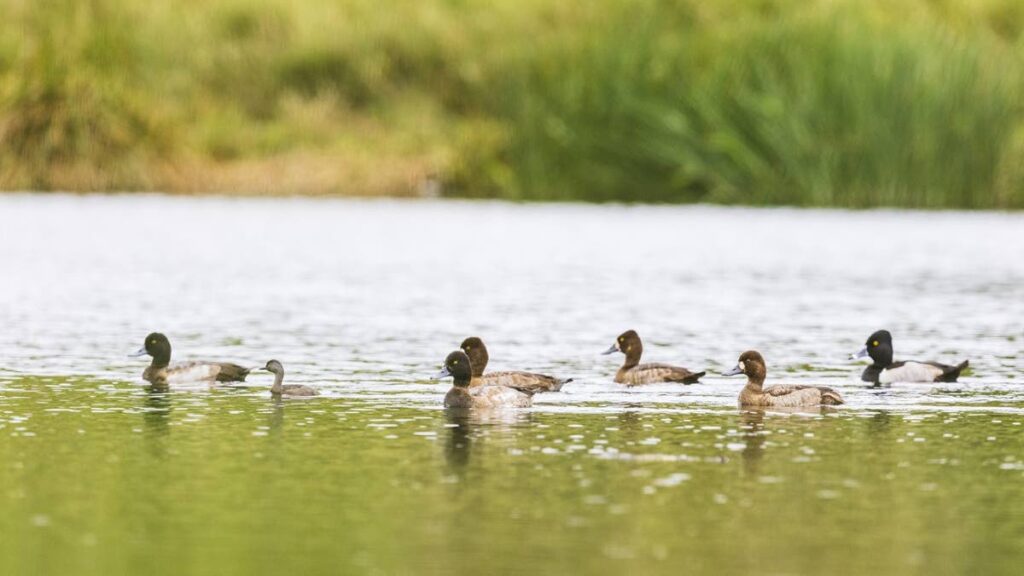
In low-lying south-west Tobago, the network of wetlands has been significantly altered by human occupation and activity. Golf courses, housing developments, and sewage ponds encase many passages and bodies of fresh water. While depleted in many aspects, these ecosystems are far from being completely devoid of life. In fact, they are a beacon of bounty for visitors from afar.
The ecology of wetlands is most apparent in large and conspicuous fauna, and perhaps most attracted to this type of habitat are ducks. Ranging from dove-sized diving ducks to geese and swans large enough to intimidate a grown man, this diverse family has made itself perfectly comfortable in a range of habitats from rivers, wetlands, and marshes to lakes and coasts throughout tropical and temperate regions around the world. Ducks are some of the most endearing and recognisable birds, having played leading roles in nursery rhymes, TV shows, and other areas of popular culture. Hunted and domesticated for centuries, there are over a hundred species of ducks – many of which are threatened with extinction.
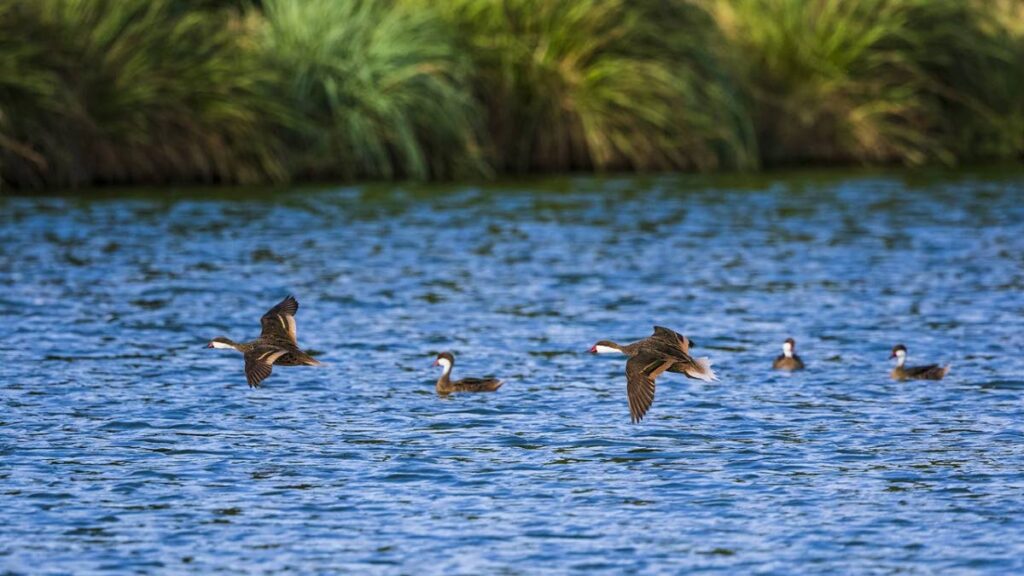
Most prominent of Tobago’s ducks is the black-bellied whistling duck. Its far-reaching vocalisation is a familiar sound to most of us, whether we are aware of it or not. In the quiet of the night, listen for the shrill staccato cries of a small group of black-bellied whistling ducks as they fly overhead. When food is abundant, these ducks can gather in large numbers. These herbivorous ducks are predominantly nocturnal feeders and are also known for spending considerable time in trees.
Elongated tail feathers and distinctive brown and white facial markings make it clear how the white-cheeked pintail got its name. Although they are slightly smaller and not as vocal as the black-bellied whistling ducks, white-cheeked pintails are also found in groups. Sliding silently over the water, these intricately patterned ducks feed on aquatic plants and seeds near the surface. To reach food further underwater, they upend themselves and stretch downward with tails pointed skyward.
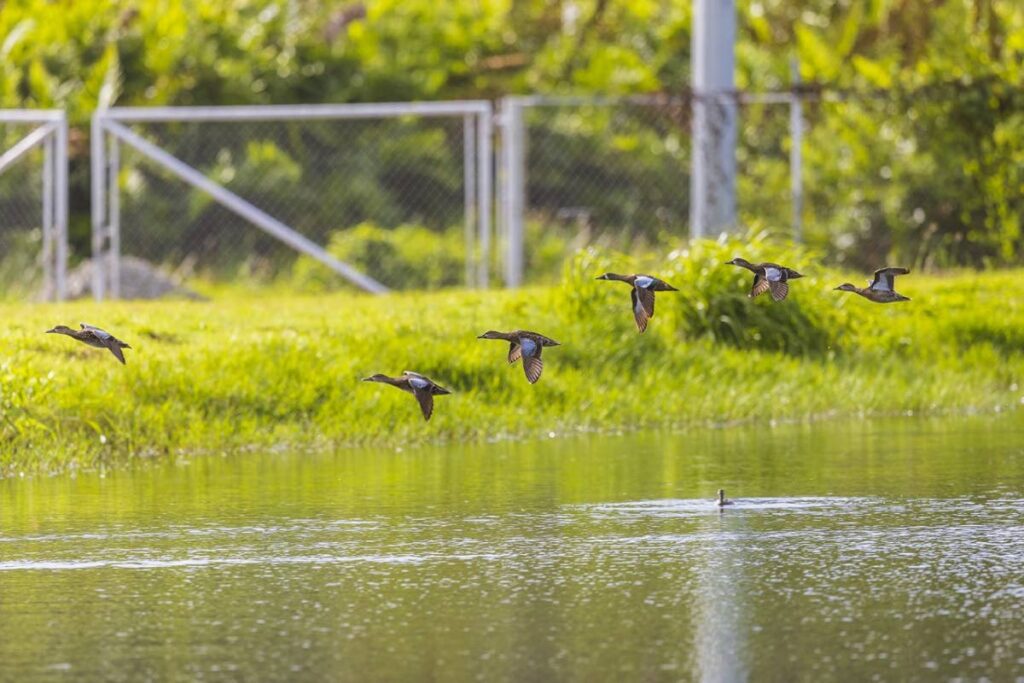
The blue-winged teal is another species of small, brown duck with some individuals also bearing white cheek-marks. While the white-cheeked pintail and black-bellied whistling duck are both resident on the island of Tobago, blue-winged teals are migratory. They arrive here during the months of the northern winter.
Occasionally, there are other species of ducks that migrate to Tobago during this time. Some species breed in far northern territories, and these ducks will winter in any suitable habitat throughout North and Central America and rarely venture further south. Some, like the American wigeon, are extremely common throughout North America but if found this far south, would typically be alone or in small numbers. Nevertheless, this species is similar in feeding habits to the teals, pintails, and whistling ducks. They are all referred to as dabbling ducks as their food is primarily gleaned from the surface of bodies of water. Dabbling ducks also graze on land, and the central positioning of their legs are adapted to dabbling or walking. When seen on the water, dabbling ducks float relatively high, with the entire bird appearing to be very buoyant.
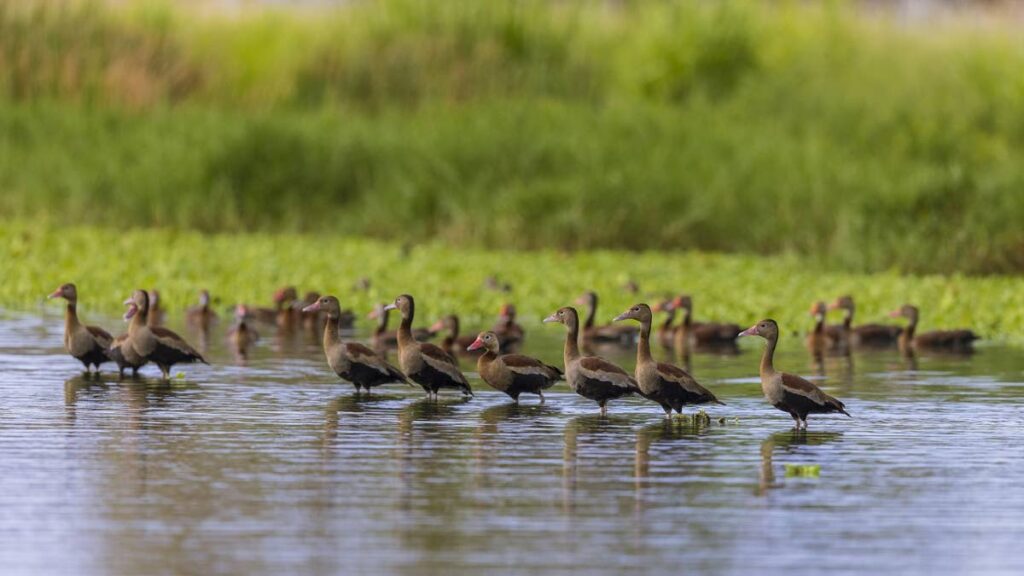
By contrast, diving ducks’ legs are located nearer the rear end of their bodies. They are somewhat awkward on land, and diving ducks do not spend much time walking around. These far aft legs act like a powerful propeller that provides considerable thrust underwater. Furthermore, diving ducks can compress their feathers into their bodies, expelling any trapped air and achieving further buoyancy control. Consequently, when a diving duck is seen floating on the surface, it is immediately differentiated from a dabbling duck by how low it sits in the water.
It should be noted that the distinction between diving and dabbling ducks is not much more than colloquialism, but a useful one at that, providing insights into the morphology and behaviour of these incredible birds. For example, it is generally accepted that dabbling ducks are mostly herbivorous while diving ducks tend to be omnivorous or carnivorous. There are exceptions to every rule, however, and the mysterious masked duck, resident in Tobago’s secluded marshes, is in fact a diving duck that feeds on plant matter.
True diving ducks are infrequent on Tobago. Lesser scaup and ring-necked duck are two species that breed in northern North America and sometimes visit the wetlands of Tobago to spend between a couple days and a couple months. Both omnivorous, similarities in plumage also exist which can make them difficult to tell apart.
However their food is obtained, ducks play a pivotal role in wetland ecosystems and are valued as keystone species in many areas. Most populations are in decline, and strict regulations are in place for waterfowl protection. In TT, it is prohibited to hunt any waterfowl at any time of year. Implemented in September 2019, this prohibition has resulted in notable increases to the duck population on both islands. More ducks in our waterways will effectively control vegetation and insects overtaking a pond; ducks feed on aquatic larvae – contributing some level of balance to imperiled habitats.


Comments
"Preserving wetlands for the birds"